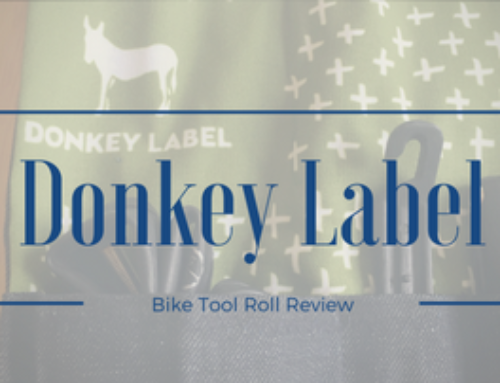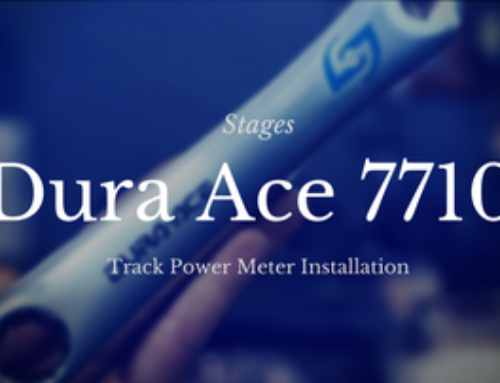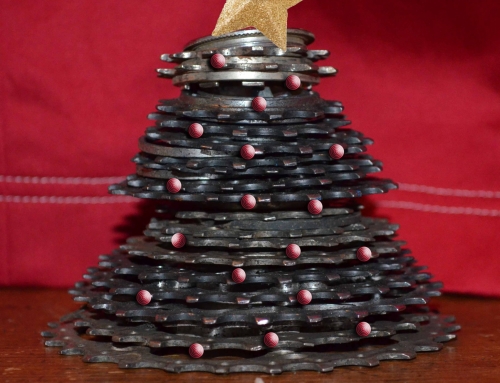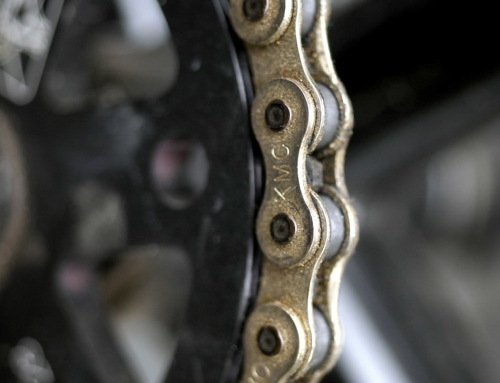The Global Marketplace?
It's no secret that the global marketplace has replaced the economic model in which goods are produced in the same country they are consumed. It's not uncommon to look at well more than half the things on our shelves and find them to be manufactured in China, Taiwan, Cambodia, Malaysia, etc etc. It's also no secret that the cycling industry has fully embraced this model as well. Some companies claim it's because the far east has surpassed the home country in carbon manufacturing, or some say that it's a labor issue, others claim that it was becoming prohibitively expensive to produce items in their own factories (although some companies like BMC, and Time tend to eschew these Asian factories.) Regardless of the reason that production has shifted overseas, it has still opened up a huge can of worms: the Chinese Carbon Conundrum.
My bike was built where?
Make no mistake; most of todays monocoque carbon frames are actually produced in Asia, most notably Taiwan and mainland China. Chances are, if you're riding a monocoque carbon bike, it was produced in Asia, shipped to the branding company's facilities, painted, labeled, assembled and shipped out to distributors. Oh yes, and there's also the step where they add a “Made in Italy/Spain/France/Beirut/Russia sticker.” (Actually, that's incorrect, in Soviet Russia, bike stickers YOU! Ugh, I'm sorry…)
Why is this sticker allowed to be applied, you ask? Simple. According to the bike industry's definition, they allow a “Made in _____” sticker if more than 60% of the bike's value is added to it in the country it is stickered for. Example: Cannondale frames are produced in Taiwan, then the naked frames are shipped to the US for paint and assembly. Because most of the bike's value is added in the US, they are allowed to put a “Made in the USA” sticker on them. This adds a bit of confusion as to where the bike is actually from.
The same condition often applies to wheels. One carbon mould can be used by numerous companies, often times with simple label differences or minor finishing differences.
Note that not all manufacturers operate this way: Time builds their own frames in house, from bottom to top of their line. Look produces their frames in their own plant in Tunisia. De Rosa does all of it's own manufacturing in Italy. Colnago manufactures all it's frames in Italy with the exception of a few of their lower end carbon offerings. Trek still produces it's top tier Madone frames in Wisconsin, while their lower end offerings are Asian in origin. BMC recently opened their own state of the art plant in Switzerland, doing everything from weaving carbon to building frames. So as you can see, there is production all over the world, but with an emphasis in Asia.
Buying factory direct?
Because there is a huge segment of the bike industry based in Asia, and because the internet has made connecting with people and industry so utterly simple, it's no surprise to see that there are offers of “factory direct” and “OEM” framesets appearing all over the web. Companies post ads on sites like Alibaba (tip: never give your money to someone advertising on a site that is named after the leader of the 40 thieves) or on eBay, offering things like “carbon bicycle frame/fork, like ______.” Often these “factory direct” frames are priced out at literally 20% of the cost of a similar carbon frame from major manufacturers. It's interesting to say the least, and one can definitely see the appeal in these frames. But think about this: buying a bicycle is not just a price point, is it? Maybe it is. There have been numerous discussions (often devolving into all out flame-bait) on forums from here to Europe and back.
Objectivity
Everyone seems to have something to say about these, so let's try to be objective here and put together a little list of pros and cons of these bikes.
Pros:
Price – You can (theoretically) have a carbon frame similar to a major manufacturer for about a quarter on the dollar. That's a pretty good deal. Same thing with carbon wheels.
Unbranded/Raw Carbon – This appeals to a number of people who like to eschew fancy graphics and the “billboard” style presentation of many bikes and wheels today.
Customizability – Instead of picking a spec off the floor of a bike shop, you can order a frame and add parts as you see fit. You can even have it painted in your own specific colour scheme if you wish, which is a pretty cool idea for the artistic minded among us. Wheels can be ordered in clincher, tubular, clear, matte, coloured spokes and hubs, different depths…all kinds of things.
Cons:
Unknown origin – Many of these sellers are very vague about where they source their frames and rims, whether they come from larger factories (Giant, Martec, Marida, Kinesis or what-have-you) or from smaller factories that have popped up around the country.
Unknown construction – What is the quality of the carbon and resin used to construct the frame or rims? How carefully are the frames and rims laid up and cured? (There was an article a few years ago detailing a chinese newspaper laid up inside a dissected fork, and foam and clay laid up inside a dissected seat tube lug, and there are some recent photos showing severe voids in dissected carbon wheels. That's somewhat scary.)
Unknown engineering – Are these items based upon other companies models or are they independently engineered? A lot of the frames on the marketplace are very reminiscent of some major manufacturers frames. This leads into dangerous territory of the possibility of factory seconds, quality control rejects, or plain old stolen black market OEM frames as well. (Sidenote, there is one particular company going by the name Greatkeenbikes that produces and sells a frame, with optional paint from the factory, that directly resembles a Pinarello Prince/Dogma/FP7. Many claim this is an OEM frame, but little details like external brake cabling and english threaded bottom brackets point to this being a copy, not an actual OEM frame.)
Lack of warranty support or service network – These frames are just that: frames. There is no expressed warranty on these frames or forks, and each occurrence of a problem would be a crapshoot in getting parts warrantied, along with the issue of sending them back to China. Same issue with wheels, although these are generally easier to repair on one's own, unless a structural failure occurs.
Poor quality control – Plenty of forum posts have been made about the assembly of these frames, with problems like gobs of resin preventing headset installation (requiring a dremel to remove them), fork crowns that need to be sanded to accomodate crown races, bolts that need to be ground down to fit in frames, and brake mounting holes needing drilling out to seat bolts properly. Small details like this are more often than not corrected by the major manufacturer's quality control before shipping.
Subjectivity
To me personally, I prefer to be able to ride a bike, test a set of wheels, or at least lay my hands on those particular components before I lay down my hard earned money. You won't likely be seeing a lot of these non-branded Chinese frames in bike shops. Why? Well, there has been an interesting discussion on safety testing and certification on these frames, and to my knowledge, nobody has been able to confirm their certification. CPSC standards need to be met for each bike frame (read here: CPSC standards for bicycles) and for various other parts, so it seems unlikely that those standards have been tested and met. Importing these frames and assuming the liability if one of them should result in injury would be a huge step for any bike shop to take.
On top of the lack of physical presence (basically ordering blindly online) there is also the issue of non-identity. To me at least, bikes have a certain soul of their brand in them. A lot of people buy a Pinarello for the storied history of the brand, the quality of the frame and the certain emotional connection they share with the bike. Buying a brandless carbon frame is akin to having a soulless little hellspawn child; it brings me to make a sad face.
Finally, you have the ethical dilemma of buying something that could be a black market frame, or something that is basically a counterfeit or blatant copy of another company's work. Yes, there's the “stick it to the man” mentality, but that's about as bitter as you can get: circumvent a company's dealer channels to get a potentially counterfeit item for less money because you're pissed off that they marked up the price? That's where the moral or ethical line is drawn in the sand; are you comfortable buying from a “shady” source just to save a few bucks and screw the company who rightfully owns the design?
Of course, subjectively, this is all my personal opinion, and your mileage may vary.
Chinese carbon conundrum
When all is said and done, price is often not the leading factor in the decision to buy a carbon bike or wheels, mainly because the cycling industry is (like any other industry) built on sponsorships, word of mouth and brand mystique. But in the case of these Chinese offerings, price is the driving factor. For a quarter of the price of an expensive frame or set of wheels, you could be riding something that (on the outside at least) is very similar to what others paid full price for. If you find price is the most important aspect of any purchase, by all means, choose the cheaper tool. But remember that in cycling, like everything else, you get what you pay for. If you buy cheap, expect cheap, be it quality control, product quality, service or a shorter product lifespan.
In the end, the choice is yours to make if you decide to go with a name brand or a “factory direct” item, and you'll have to navigate your way through the Chinese Carbon Conundrum on your own with a combination of ethical soul searching right alongside checking your bank balance.
Any of my readers own Chinese direct parts? Want to add your $.02? Drop a comment below and start the discussion.






Good post and read. Alot of solid info here to consider when purchasing bikes and parts. Thanks.
[…] while back I wrote a long post about the growing problem of people buying ripoff carbon frames from China and trying to pass them off as legitimately produced and sold bikes. Pinarello is perhaps the […]
[…] it is bad) and quality in order to get something cheap (and nowhere is this more apparent than buying goods directly from China.) This drives the internet/online store purchasing, even at the expense of local businesses. […]